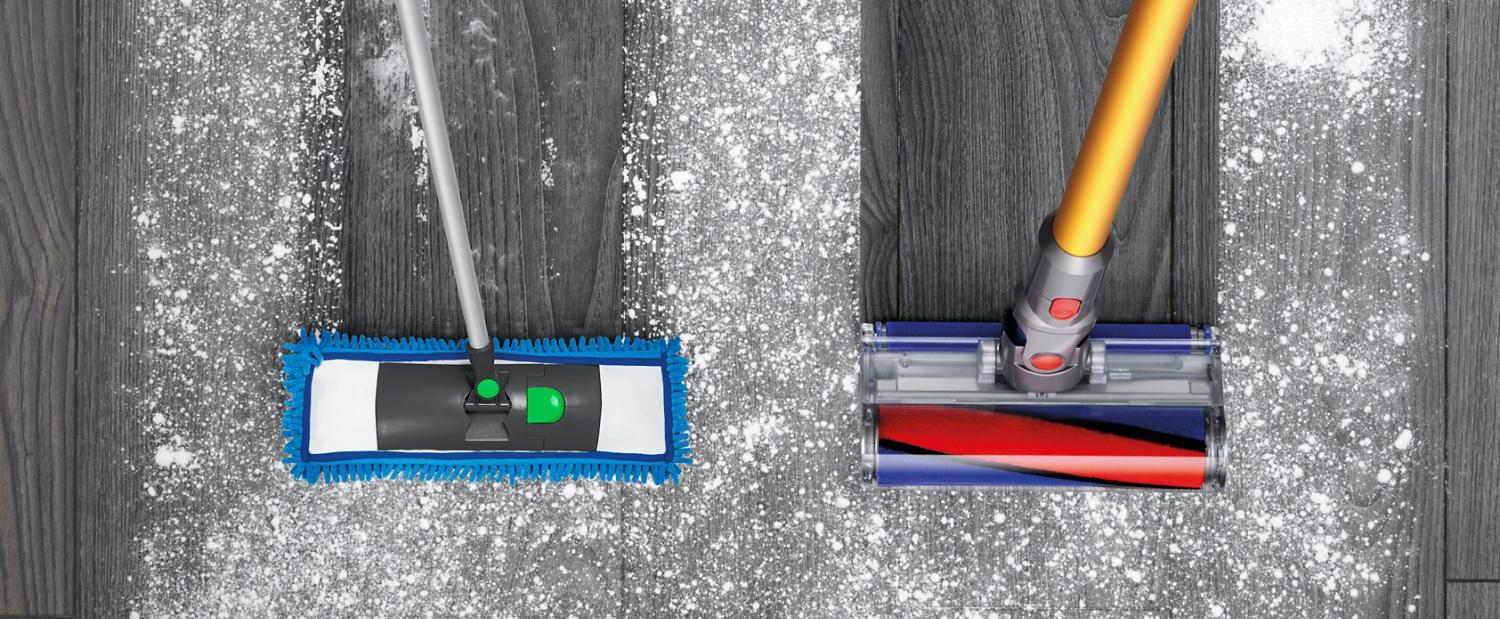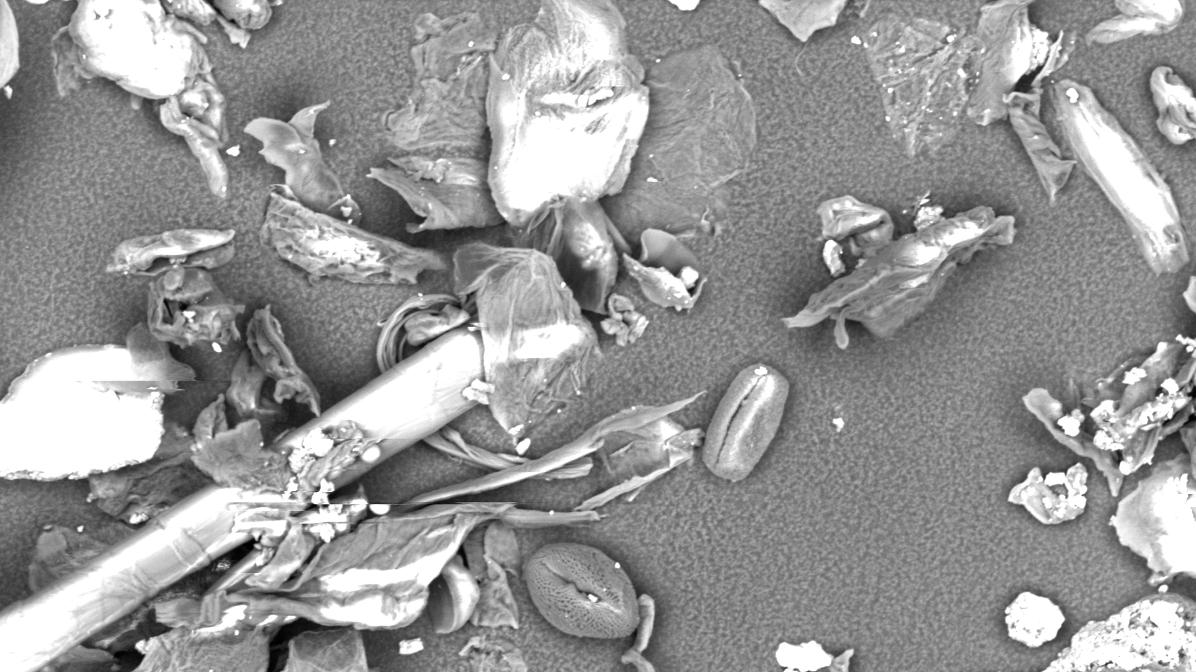

- Vacuum Before You Mop: Removing dust before wet cleaning prevents smearing and ensures a truly clean floor, especially in homes where people spend time barefoot or on the floor.
- Use the Right Tools and Methods: Soft roller vacuum heads, the correct accessories, and gentle cleaning products preserve your floors while effectively removing dirt and stains.
- Act Fast and Gently on Stains: Address stains quickly with mild solutions, and never mix cleaning chemicals - especially on sensitive floor materials - to avoid permanent damage.
We all have different approaches when it comes to cleaning. In many Asian homes, notably in China, Japan and South Korea, families are accustomed to spending time on the floor – whether it’s children playing, sitting to watch television or even having meals together on a low table.
With this, achieving a “barefoot clean” is essential. With the help of Dyson experts, we explore different cleaning methods and habits to understand what really works best when aiming for “barefoot clean” on hard floors - as well as what doesn’t.
Important questions to consider:
- Are you vacuuming properly before you mop?
- Is dry and wet cleaning really the best way to clean?
- Did you know that if dust isn’t removed fully prior to wet cleaning, then it can be smeared across hard floors when the mop function is used, potentially leaving a dirtier rather than a cleaner floor?
- How often should you be vacuuming for the best clean possible?
“There is a common misconception that it’s ok to go straight into mopping floors as that cleans up all the dirt in your home,” explains Sharon Yap, Head of Technology Development at Dyson. “If dust isn’t removed fully prior to wet cleaning, then it can be smeared across hard floors when mopping your floors, potentially leaving a dirtier rather than a cleaner floor.
"The best advice for cleaning wooden floors is simple: vacuum your floors at least once a week to prevent your dirt from grinding in,” she adds. “For me, I try to give the high traffic areas of my home a little extra attention, such as kitchens and bedrooms, as the floor can quickly collect a lot of dirt, debris and stray hairs.”
“Many people believe that hard floors are more resistant to wear and tear – for example, marble flooring is a common type of flooring in many households, and some might use cleaning products that contain ammonia or acids, which will cause the flooring to erode and be uneven! Even while scrubbing the floor, be sure not to use anything with sharp bristles like metal scrubbers. Also, if you don’t vacuum first, you risk spreading dirt rather than removing them.”
How to clean your hard floors day-to-day
The daily routine for most people consists of removing the visible dust you see from hard floor surfaces, using a variety of methods – dry wiping, sweeping and vacuuming. However, what’s equally important is the invisible dust that cannot be seen with the human eye, which is best removed with a vacuum cleaner. If you prefer to follow up with mopping your floors, here’s what you need to keep in mind:
“With mopping, you use disinfectant to clean. You are not trying to remove germs but rather you are trying to kill them. The combination of mopping to kill germs and suction to remove fine dust are two very different jobs. They need to work in unison to achieve that barefoot clean feel. You really must ensure you are vacuuming properly, with the most effective technology to try to remove all of that dust is removed before reaching for the mop,” says Yap.
Dampening dust on floors – even fine dust invisible to the naked eye – could mean that you’re creating a habitat more favourable to dust mite and mould proliferation.
"Our 30 years of research in microbiology shows that the best way to get rid of dust allergen is to remove it completely from your home – which is why we invest so heavily in vacuum cleaner technology. In order to capture the fine dust and dirt that may not be seen to the human eye, you need an effective vacuum that picks the dust up, has efficient cyclones to keep it in the machine, as well as filters and seals to make sure it's not emitted back into your home. By doing this, you can then move on to the next step of cleaning your floors to achieve that true barefoot clean,” adds Yap.
Top tips to keep your hard floors dust free and clean:
- Vacuum daily. Vacuuming the high traffic areas in your home ensures that dust doesn’t build up in any areas.
- Use the right brush head to avoid scratches. The Dyson V15 Detectᵀᴹ senses whether you are vacuuming on hard or soft surfaces and can adjust the suction accordingly*. The Dyson soft roller head (Fluffy) is specially made for hardwood floors and coated with antistatic carbon fibre filaments removes dirt and fine debris.
- Use the right accessories. While it may seem like an effort to change tools mid-vacuum, this will help you remove dust you can see, and dust you can’t. Use a crevice tool to clean hard to reach places.
- Avoid mopping if you can still see visible dust on your floor.
- Vacuum before mopping. It might seem like double the work, but it’s important to try to remove all the dust in your home first. If the dust isn’t removed fully prior to wet cleaning, then it can be smeared across hard floors when the mop function is used, potentially leaving a dirtier rather than a cleaner floor
-

From daily cleaning to dealing with entrenched dirt and stains, Dyson engineers James McCrea and Dr Calum Robertson share their top tips on how to keep your carpet clean.
-

We spend roughly a third of our lives in our beds, but studies show that hardly any of us regularly prioritise our mattresses as part of our cleaning regimens. Dyson engineers share top tips on how to keep your mattress clean – and tackle the microscopic life lurking beneath the sheets.
How to remove hard floor stains
While hard floors can be fairly straightforward to maintain, they are still susceptible to wear and tear over time, as well as stains. Stains are made up of a number of chemicals or chemical components, so it’s important to understand what cleaning products you can use for the type of stain.
“There is an assumption that hard floors are smooth, but that’s not true. Wooden floors have grooves and even tiles can be porous and absorb stains,” says Dr Calum Robertson, Chemical Research Scientist at Dyson. “The strong chemicals aren’t always the best solution – bleach can remove the varnish on wooden floors, so it’s always safer to start with a lighter solution like soap and water to avoid damaging your floors.”
- Start slowly with soap and water. Metal surfaces can present as a corrosion risk if you use products that are too abrasive – always start with some warm water and soap to see if stains can be removed first.
- Act quickly with stains on marble flooring. Marble is a porous stone material – leaving stains on your marble flooring may result in permanent damages. For oil-based stains, which can comprise of common household items like cooking oil, milk, butter or even hand lotion, use a liquid cleanser that contains household detergent, mineral spirits or acetone.
- Use bleach-based products sparingly. Some stains, like tea, coffee or red wine cause discoloration and so you may need to apply a bleach-based product to these kinds of stains – but only in sparing amounts. Always test the product on a more inconspicuous part of your flooring first and be patient when cleaning – and always read the label! Applying too much at once can cause irreversible discolouration to both the stain and your floors.
- Don’t mix and match! As eager as you may be to get rid of stains, be patient with the process. A study undertaken by the CDC found that poisonings related to combining household cleaning products surged during the Covid-19 pandemic* as people sought to clean their homes with a mix of disinfectants and bleaches.
- Be sure to have vacuumed beforehand, using the right accessories to get into the cracks and crevices to remove all dust – both visible and non-visible to avoid spreading bacteria when you clean afterwards.
*Chang A, Schnall AH, Law R, et al. Cleaning and Disinfectant Chemical Exposures and Temporal Associations with COVID-19 — National Poison Data System, United States, January 1, 2020–March 31, 2020. MMWR Morb Mortal Wkly Rep 2020;69:496–498. DOI: http://dx.doi.org/10.15585/mmwr.mm6916e1.
FAQs
1. Why is vacuuming before mopping important for hard floors?
Vacuuming first removes visible and invisible dust, dirt, and debris. If you mop before vacuuming, you risk smearing dust and dirt across the floor, which can make floors even dirtier and less hygienic.
2. What are the best practices for daily hard floor cleaning?
Vacuum high-traffic areas daily using a suitable brush head to prevent scratches. Use different vacuum accessories for corners and crevices. Only use mopping after thorough vacuuming, and avoid harsh chemicals or abrasive tools.
3. How should you deal with stains on hard floors?
Start cleaning stains with mild soap and water, act quickly (especially on porous surfaces like marble), and use bleach or strong chemicals sparingly after testing in an inconspicuous area. Make sure to have vacuumed thoroughly beforehand.


